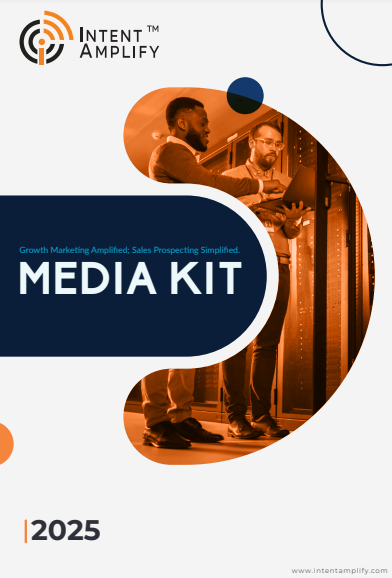
Sales & Marketing Alignment Fuels Your B2B Pipeline Health
- Last updated on: March 18, 2024
Marketing and sales organizations rely on one another for sustainable B2B revenue growth. Marketing creates leads. Sales closes them. But when these organizations work in silos, with their processes, platforms, and definitions, pipeline health is the casualty.
This disconnect remains prevalent in 2025. Marketing teams are thrilled with lead quantity, while sales teams grapple with unqualified leads. What’s the outcome? Wasted resources, slower sales cycles, and declining conversion rates.
Organisations with strong sales and marketing alignment achieve 208% higher marketing revenue than those with poor alignment.
In this article, we’ll explore how aligning your sales and marketing teams can dramatically improve your B2B pipeline performance. We’ll highlight real problems, practical solutions, and actionable ways to sync efforts for long-term revenue growth. Let’s begin by examining how misalignment weakens your pipeline.
Why Sales and Marketing Alignment Drives B2B Pipeline Health
Getting your sales and marketing teams aligned is not a privilege – it’s a strategic imperative. Aligned teams generate better-quality leads, advance deals more quickly, and close more reliably. When they’re working toward a unified revenue goal, everything gets better: ROI, trust, velocity, and scalability.
Without the involvement of the sales team, the marketing creation may overlook some pain points. The sales team without trendy messaging in place, with outdated messaging, may lose some prospect interest. However, in collaboration, they supercharge each other through sound amplification towards healthier pipelines and faster growth. At Intent Amplify, we close this gap for businesses through proven frameworks, tools, and playbooks. Here’s how you do the same.
Why Sales and Marketing Misalignment Harms B2B Pipeline Health
1. Unqualified Leads: Without teamwork, marketing will hit the wrong target or use partial information. Sales representatives will pursue leads with minimal conversion value, filling up your pipeline.
2. Ineffective Nurturing: If content doesn’t align with sales requirements, leads receive mass-personalized messages. Participation dwindles, and conversions grind to a halt.
3. Communication Gaps: Without messaging alignment, prospects are given mixed signals. Trust decreases, and opportunities escape through the cracks.
4. Inconsistent Metrics: Marketing is targeting MQLs while sales is targeting SQLs. Without aligning goals, efforts go astray, and the funnel leaks.
5. Culture of Blame: Without alignment, issues become finger-pointing. “Bad leads” vs. “bad follow-up” excuses destroy morale and stifle progress.
Define a Qualified Lead Together to Enhance Sales Conversions
Challenge: Marketing and sales are not aligned on what constitutes a lead
Solution: Get aligned on goals, definitions, and the handoff process of the lead
A study conducted by Marketo and ReachForce indicates that 80% of marketing-generated leads are overlooked by sales. Why? Because marketing’s “qualified” doesn’t always fit sales standards.
Fixing this begins with a conversation. Define what a Marketing Qualified Lead (MQL) and Sales Qualified Lead (SQL) mean for your business. Align on lead scoring, data enrichment needs, and timing for handoff.
Once you’ve clarified what matters most – industry, budget, pain point, readiness – marketing can generate better-fit leads. Sales can then focus on high-potential prospects, increasing close rates. And marketing can tie success to conversions, not just quantity.
Align Your Sales and Marketing Strategy to Boost B2B ROI
Problem: Campaigns in disarray, goals inconsistent
Solution: Hold joint planning sessions and review meetings
When sales and marketing collaborate on strategy, they build a united customer experience. Shared brainstorming fuels creativity and reduces misfires. More importantly, it strengthens team morale and purpose.
Host joint campaign planning sessions. Vet data together. Offer sales a voice on content subject, form, and timing. And in exchange, sales can provide objections they hear, so marketers can create assets that convert.
This harmony stops the cycle of competition and finger-pointing. When a lead converts to a customer, it’s a shared victory, not a tug-of-war. And that feeling of shared ownership propels pipeline momentum and revenue growth.
Streamline Workflows with Integrated Sales and Marketing Platforms
Problem: Separate tools create drag and miscommunication
Solution: Embrace common platforms for tracking, engagement, and reporting
Imagine your teams as chefs in the same kitchen. If one uses a messy station and the other cooks blindfolded, the dish is a disaster. The same goes for pipeline execution. Integrated tools, CRMs, marketing automation, and sales engagement platforms make teamwork seamless. They provide collaborative visibility into lead activity, behavior, and movement.
Remove the independent dashboards and use a single workspace. Have both teams view lead journeys, content engagement, and conversion in real time. This cuts through confusion, increases accountability, and aligns messaging end-to-end within the funnel.
Shorten Your Sales Cycle Through Collaborative Content and Targeting
Issue: Sales cycles are long, and outreach falls on deaf ears
Solution: Map the customer journey together and co-create engagement assets
2025 buyers are more informed, discerning, and immune to sales contact. Cold calls and blanket emails routinely go unread. To succeed, marketing and sales need to share ownership of the customer journey.
Start by segmenting your audience based on real behavioral data. What content drives action? What objections delay conversion? Use that data to create targeted campaigns—content that resonates with the right person at the right time.
Sales can guide messaging based on field feedback. Marketing can refine tone, visuals, and channels. Together, they deliver a seamless journey that shortens the sales cycle, improves close rates, and enhances the customer experience.
Ready to Align Your Sales and Marketing for Faster B2B Growth?
At Intent Amplify, we don’t merely talk about alignment – we build it. From the establishment of qualified leads to the alignment of your engagement stack, we empower B2B organizations to align strategy and execution. Let us assist you in creating a healthier pipeline that converts faster, smarter, and better.
Discover our appointment-setting services
FAQs
1. What is sales and marketing alignment in B2B?
It is used to describe tight alignment between sales and marketing organizations working towards shared revenue objectives. It encompasses joint lead definitions, campaign plans, and measures of performance.
2. Why are B2B businesses plagued by team alignment?
Miscommunication, siloed technology, and conflicting success measures are typical culprits. These roadblocks result in unqualified leads, duplicated effort, and longer sales cycles.
3. How to align sales and marketing efforts practically?
Begin by establishing what a qualified lead is. Next, develop collaborative KPIs, unify your tools, conduct frequent alignment meetings, and collaborate on content to aid the customer journey.
4. What tools enable improved sales and marketing alignment?
HubSpot, Salesforce, Slack, and collaborative analytics dashboards offer transparency, monitor engagement, and enable cross-functional teamwork.
5. How can I measure the success of sales and marketing alignment?
Track metrics that reflect both team contributions, such as lead-to-customer conversion rate, sales cycle length, marketing-sourced revenue, and pipeline velocity. Regular alignment meetings and feedback loops also help you gauge qualitative progress and ensure continuous improvement.




